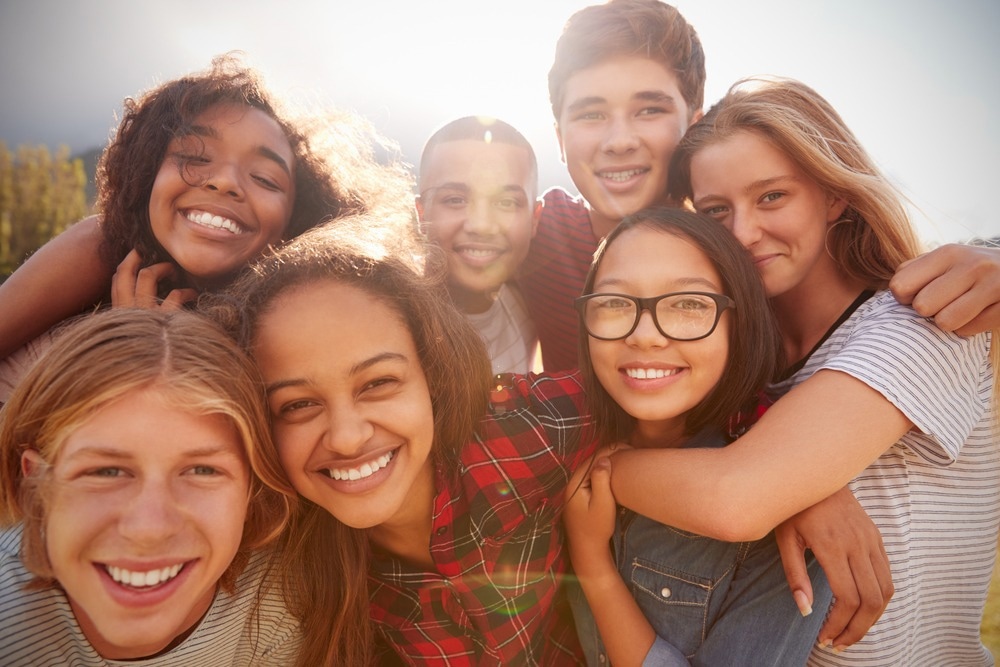A recent study published in Scientific Reports highlighted how adolescents actively consult members of their social networks to obtain information, countering previous research that considered younger people to be passively affected by peer pressure. The results from two experiments indicate that adolescents prefer friends over non-friends as sources of information, but evidence regarding the importance of popularity is mixed.
 Study: Identifying who adolescents prefer as source of information within their social network. Image Credit: Monkey Business Images/Shutterstock.com
Study: Identifying who adolescents prefer as source of information within their social network. Image Credit: Monkey Business Images/Shutterstock.com
The effect of peer groups on adolescents’ behavior and decision-making has been the focus of a growing body of research. Social influence can have negative effects (such as substance use) but can also be utilized to promote healthy and positive behaviors.
Designing beneficial and effective interventions for adolescents requires an understanding of how they process social cues in novel situations and are affected by the choices of others in their peer groups. Gaining such an understanding involves treating adolescents as active in the sense that they choose whom to observe and receive cues from.
About the study
The research team designed two social experiments to examine the role that friendship, popularity, and other characteristics such as kindness, likeability, and coolness play in adolescents’ decisions to consult members of their social network for information. The authors hypothesized that the influence of popularity would be greater for younger adolescents than older adolescents and that the role of friends would increase with age.
In the first experiment, researchers observed how adolescents chose their peers as sources of information when in an uncertain situation. Students from 10 classes in two secondary schools in the Netherlands participated in the study. Students answered questionnaires and played games designed to assess their solo decision-making.
After two to three weeks, the students played three games with the possibility of a monetary reward in addition to an incentive of 5 euros per student. This time, the students also answered questions about their perceptions of others in their class, identifying their friends, popular students, and others based on characteristics such as influence, intelligence, and trustworthiness.
Before they submitted a final answer for the games (which had no ‘right’ answers), they could choose to see how their classmates had responded to questions in the first session, specifically whether they had chosen safer or riskier options. The data from the first experiment were analyzed using logistic mixed models and variable selection methods.
In the second experiment, the research team set out to gain a better understanding of which peer characteristics influenced the decision of students to consult them; these characteristics were linked with popularity, such as coolness, meanness, and admirability. Students of 22 classes from two Dutch secondary schools participated in this part of the study.
As before, participants played solo games in the first session but were told that they would play the games again in a subsequent session. They were then asked which, if any, of their classmates they would want to consult for the next session. The data was analyzed to predict peer selection using confirmatory logistic mixed models.
Findings
Out of the 140 participants aged between 11 and 18 years in the first experiment, 95% chose to reveal the choices made by at least one classmate from the first session before making their decisions in the second session. They were also influenced by the revealed information, choosing riskier options if they saw that theirs had made riskier decisions.
Selections were significantly predicted by friendship, with friends being 1.8 times likelier sources than non-friends, and this probability increased with age. Socially distant peers were consulted less frequently, with friends being chosen more frequently than friends of friends. Popular peers were chosen less frequently than non-popular peers, but this effect disappeared as respondent age increased. Trustworthiness was also a factor that influenced decision-making.
Out of the 278 students aged between 12 and 17 years who participated in the second experiment, 234 said that they wished to consult their peers, choosing an average of 4.4 classmates. The friends of the respondents were 14.08 times more likely to be chosen, while classmates perceived as trustworthy were 7.22 more likely to be chosen. In this case, the importance of friendship appeared to decrease with age.
In increasing order of importance, coolness, admirability, smartness, trustworthiness, meanness, likeability, friendship, and best friendship were significant predictors of being selected. While popularity did not emerge as an important factor, many of these characteristics are associated with popularity.
Conclusions
Emerging research indicates that, far from being passive receivers of social information, adolescents actively seek out information from sources that they trust. The results of the study indicated the strong influence of friendship and trustworthiness in selecting information sources but also pointed to changes in selection criteria with increasing age.
Future studies on this interesting subject could consider a wider age range to illustrate this effect further. They could also examine decision-making beyond gambling, focusing on choices related to education or consumption. The influence of popularity could also be studied through experiments in public settings. Other factors, such as socioeconomic status, immigration background, and ethnicity, could provide more information about the real-world conditions under which adolescents make choices.
Journal reference:
- Slagter, S.K., Gradassi, A., van Duijvenvoorde, A. et al. Identifying who adolescents prefer as source of information within their social network. Sci Rep 13, 20277 (2023). doi: https://doi.org/10.1038/s41598-023-46994-0